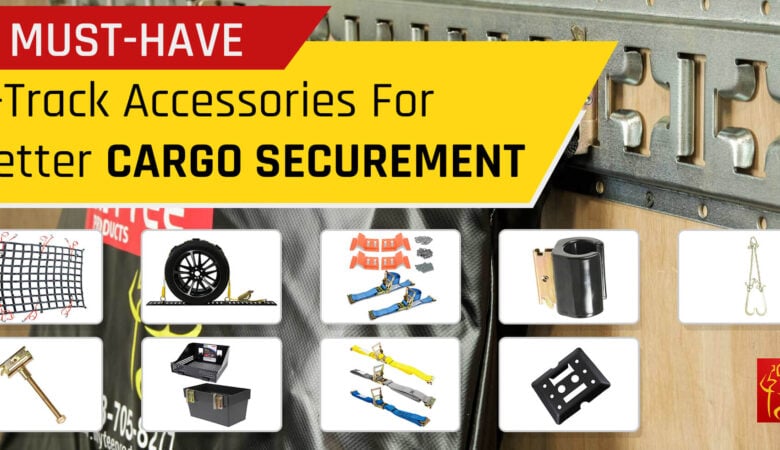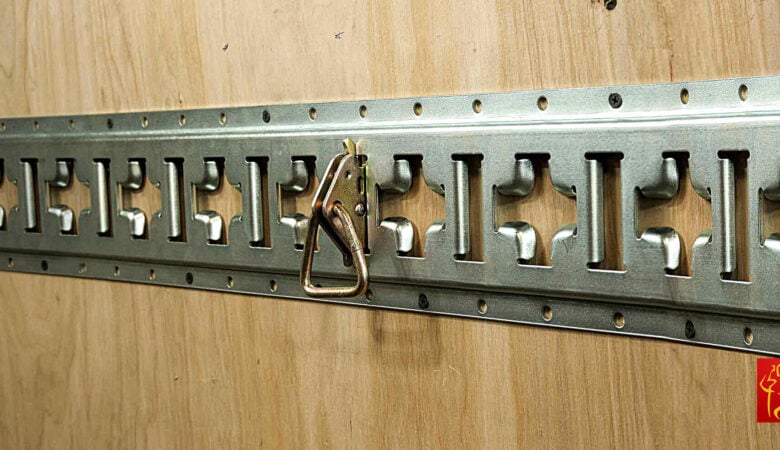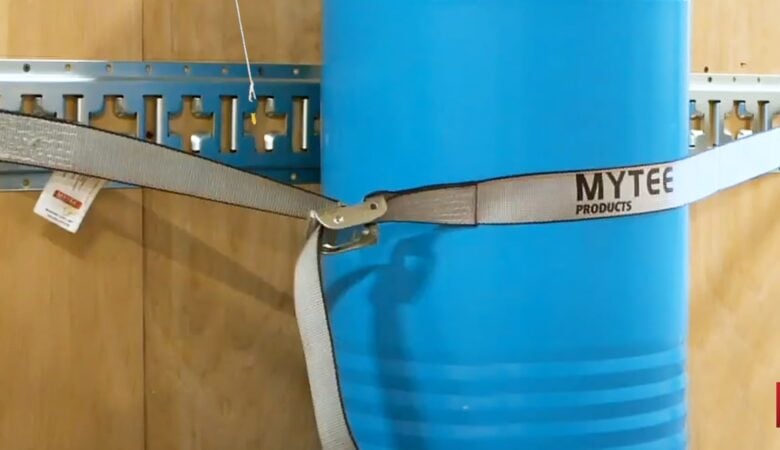If you’re looking for different ways to secure your cargo, then you should definitely consider using L Track or E Track systems. Used throughout the trucking and transportation industry interchangeably, these systems allow you the flexibility to store and secure your loads within your enclosed trailers. By using these tools, cargo securement can be done faster and more efficiently. You’re probably wondering which track system is better; L-Track vs. E-Track? In this blog, we’ll go over the specifics of each track system.
The L-Track System
Slowly making waves in the trucking industry, the L-track system has multiple uses that can be beneficial to flatbed truckers. They originated from the aircraft industry, where they were used to secure seats into the floors of an aircraft. Since then, L-Track systems have integrated themselves into the ground and trucking industry.
Furthermore, they’ve been used on everything from wheelchairs to motorcycles and even a sprinter van. Despite the fact that they can be used on any type of vehicle, L-Tracks are more compatible with pick-up trucks. The length of the system matches the width of the bed rails of a truck, making it the top choice amongst truckers.
Additionally, truckers love their versatility. L-Tracks offer several different attachment points and low profiles and are easy to install. Even their simple but attractive, aluminum design catches the eye of most drivers.
They have several other features to swoon over as well. These heavy-duty rails have a breaking strength of 1,600 lbs and pre-drilled holes designed for mounting purposes. Specifically, for every 1 inch of E-Track rails, there’s another opportunity to mount your cargo. With an L-Track, a trucker will have plenty of room to mount their cargo. Clearly, L-Tracks have multiple features that make them a big standout in the industry.
The E-Track System
On the other hand, E-Tracks systems are heavier, stronger, and much more industrial than L-Tracks. Typically, these steel-infused rails are designed to be used in tractors and enclosed trailers. Though, that doesn’t mean they’re not versatile like the L-Tracks.
Truckers can either install them in a Horizontal and Vertical fashion. An E-Track installed on the floor can be used to secure a vehicle to the floor using axle or over the wheel straps. Moreover, the horizontal model has 1 slot for every 2 inches of the E-Track rail. On the other hand, the wall versions are designed to strap cargo to the walls of the trailer to prevent it from shifting during transport. Furthermore, the vertical styles run parallel to the rail and have 1 slot for every 4 inches of the E-Track rail.
With features like this, it’s no wonder E-Tracks are so popular amongst truckers. Moreover, their simple installation, simple design, and customizations has made them a huge success. Also, they come with several different end-fittings for you to choose from. It’s no wonder the E-Track is a fan-favorite amongst truckers.
E-Track vs. L-Track: Which Track System Is Better?

Both the L and E-Track systems come with a list of benefits for truckers. While the L-Tracks are lightweight and can be color coordinated with the paint job on your trailer, an E-Track system comes much sturdier and can handle heavier loads. Does it really come down to ‘L-Track vs E-Track’ Strength?’ At the end of the day, your decision will hinge on your flatbed trucking needs. The load you’re hauling will ultimately determine which track system works best for you.
These Track Systems Make Your Trailer More Versatile
Overall, E-Track and L-Track systems can make your trailer more versatile. Not only do you have multiple anchoring points to help secure your cargo, but these track systems give you the ability to optimize the space of your trailer to the fullest. No matter which track system you choose, they’ll make your cargo securement feel like less of a headache.
















